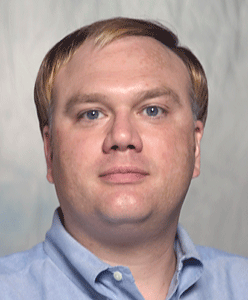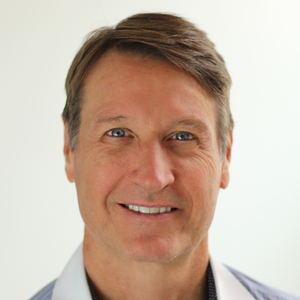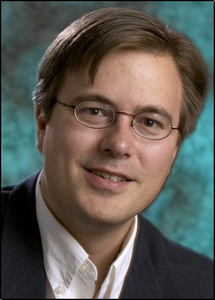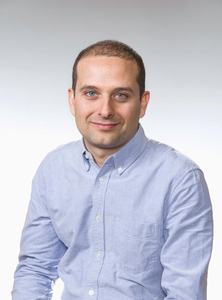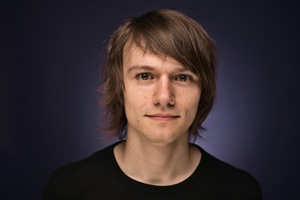AES New York 2017
Product Development Track Event Details
Wednesday, October 18, 10:45 am — 12:15 pm (Rm 1E10)
Product Development: PD01 - Headphones, Headsets & Earphones: Electroacoustic Design & Verification
Presenter:Christopher Struck, CJS Labs - San Francisco, CA, USA; Acoustical Society of America
This tutorial reviews basic the electroacoustic concepts of gain, sensitivity, sound field correction, linear and non-linear response, and test signals for ear-worn devices. The insertion gain concept is explained and free and diffuse field target responses are shown. Equivalent volume and acoustic impedance are defined. Ear simulators and test manikins appropriate for circum-aural, supra-aural, intra-aural and insert earphones are presented. The salient portions of the ANSI/ASA S3.7 and IEC 60268-4 standards are reviewed. Examples of frequency response, insertion gain, left-right tracking, distortion, and impedance are shown. Issues with interfacing to digital devices over USB or Bluetooth are discussed. Evaluation of active and passive noise canceling devices is also presented.
 | This session is presented in association with the AES Technical Committee on Loudspeakers and Headphones |
Wednesday, October 18, 2:00 pm — 3:30 pm (Rm 1E13)
Product Development: PD02 - Parallel Development: Speed Time to Market
Presenter:Scott Leslie, PD Squared - Irvine, CA USA
Time to Market may be the most important feature in a product today. Product lifecycles and windows of opportunity are shrinking. Most product companies miss their time to market needs because they don't make major changes to their development strategy. In this Product Development session the presenter will lead a discussion on parallel development and how to leverage best practices, inside and outside resources, build vs buy, and development technologies to enable a true parallel development process.
Thursday, October 19, 9:00 am — 10:30 am (Rm 1E09)
Product Development: PD03 - What Happens in a Patent Lawsuit?
Presenters:John Strawn, S Systems Inc. - Larkspur, CA, USA
Thomas Millikan, Perkins Coie LLP - San Diego, CA, USA
This session covers the mechanics of patent lawsuits and what you can expect when you are involved, whether you are an owner, manager, engineer, or employee. We will cover the basic steps including: starting a lawsuit; proving a product infringes a patent, proving a patent is invalid, using experts to show infringement or invalidity; deposing experts and company personnel; asking the judge to end the case; limiting what information is available at trial, and trying a case. There will be a detour through the recently established procedures to challenge patents at the patent office rather than in court. The presentation will involve real-world experience, including our work in what was the largest audio patent case in US history (Lucent v. Microsoft) where the MP3 standard itself was on trial for patent infringement. We will present information on how often and at what stage cases settle, as most do. And we will share insights on how to win.
Thursday, October 19, 10:45 am — 12:15 pm (Rm 1E09)
Product Development: PD04 - New Amplifier Requirements for Speaker Protection and Control
Presenter:Joachim Schlechter
The rising demand for active speaker protection across all audio applications creates new challenges on the audio amplifier design. The amplifier is transforming more and more into a "smart" system integrating sensing capabilities, digital interfaces, and internal signal processing. To push nonlinear "green" loudspeakers in small enclosures to their physical limits, a higher peak power from the amplifier is desirable. At the same time, there is a growing need for higher overall efficiency and minimal battery power consumption. This tutorial is discussing current trends and coming requirements in amplifier design in conjunction with speaker protection and control.
Thursday, October 19, 1:30 pm — 3:00 pm (Rm 1E09)
Product Development: PD05 - Loudspeaker and Amplifier Power Ratings: Is it Time to Start Over?
Presenters:Klas Dalbjörn, Powersoft S.P.A. - Scandicci, Italy
Charles Hughes, Excelsior Audio - Gastonia, NC, USA; AFMG - Berlin, Germany
Claudio Lastrucci, Powersoft S.p.a. - Scandicci (FI), Italy
What are the relevant requirements and how can we move forward to a unified way to understand and specify loudspeakers and amplifiers? A system designer will want to have specifications for loudspeakers and amplifiers (or for powered loudspeakers) that answer the questions: • How loud can I play with a given solution with the program material? • How much mains current will it draw and what heat dissipation will I have with my desired SPL? The currently used methods for specifying loudspeakers and amplifiers leave room for improvement when it comes to simplifying this. From the loudspeaker side we will discuss the "power" consumed by a loudspeaker and what determines this. We will present a newer method, based on the output response of a loudspeaker, to quantify the maximum input level. Also discussed will be peak input level capability of the loudspeaker. From the amplifier side we will look what the real world demand is for an amplifier. How do some design concepts compare when it comes to the compromises made to keep the costs down? We will look at some existing amplifier measurement methods; how do they relate to the actual demand and the achievable SPL when aligned with the existing loudspeaker measurements standards? Examples will be shown regarding flaws in only looking at voltage. Loudspeakers vary in how reactive they are and many modern amplifiers have the ability to only consume the real power needed (i.e., not turn the apparent power into heat losses). This suggests that a future proof amplifier and loudspeaker method considers real power usage. An attempt to propose a way forward will be presented, which will likely lead to an interesting discussion in the last part of this session.
Friday, October 20, 9:00 am — 10:30 am (Rm 1E14)
Product Development: PD06 - Modern Hybrid Audio Coding
Presenters:Jürgen Herre, International Audio Laboratories Erlangen - Erlangen, Germany; Fraunhofer IIS - Erlangen, Germany
Sascha Dick, Fraunhofer Institute for Integrated Circuits IIS - Erlangen, Germany
Andreas Niedermeier, Fraunhofer Institute for Integrated Circuits IIS - Erlangen, Germany
Mark Vinton, Dolby - San Francisco, CA, USA
During the past one and a half decades, recent audio coding schemes have significantly overcome traditional limits for compression efficiency by adopting techniques for semi-parametric (hybrid) coding of audio signals. By doing so, full-bandwidth stereo reproduction can today be achieved even at very low bitrates, such as 12kbit/s. The keys to this breakthrough achievement were two types of semi-parametric coding extensions: First, methods for bandwidth extension (BWE) allow full reproduced audio bandwidth even at low rates. Second, methods for parametric stereo (or multichannel) coding enable good reproduction of spatial sound under similar circumstances. The workshop will present the current state of development in these active areas, describe relevant technology and illustrate its performance by sound examples.
 | This session is presented in association with the AES Technical Committee on Coding of Audio Signals |
Friday, October 20, 10:45 am — 12:15 pm (Rm 1E12)
Product Development: PD07 - Agile Audio Product Development
Presenter:Paul Beckmann, DSP Concepts, Inc. - Santa Clara, CA USA
The days of designing everything from scratch are gone. Products are now too complicated and development times are too short to go it alone. This session focuses on recent advances in design tools for audio product developers. These tools streamline the development and tuning of real-time audio processing software. As a result, sophisticated audio features are now within reach of most companies, even those without large dedicated design teams. We walk you through a typical development cycle and highlight the benefits to design teams and organizations.
Friday, October 20, 1:30 pm — 3:00 pm (Rm 1E14)
Product Development: PD08 - Reusing and Prototyping to Accelerate Innovation in Audio Signal Processing
Presenter:Gabriele Bunkheila, MathWorks - Cambridge, UK
Innovative devices like the Amazon Echo are disrupting big segments of the audio market and shifting consumer expectations on performance and capabilities of audio and voice interfaces. As new products are driven to deliver increasingly complex features, successful manufacturers and IP providers need to reuse more design assets, deliver original innovation more efficiently, and prototype more quickly than ever before. In this session, you will learn about different techniques to integrate existing code and IP into early simulations of algorithms and system designs, ranging from embeddable code to cloud-based services. You will also be exposed to quick prototyping workflows, including methods for running in real-time and validating ideas on live real-world signals. The presentation will go through practical worked examples using MATLAB, while discussing some early-stage challenges in the design of voice-driven connected devices.
Friday, October 20, 3:15 pm — 4:45 pm (Rm 1E14)
Product Development: PD09 - Front End Audio Processing for Voice Enabled Products
Presenter:Paul Beckmann, DSP Concepts, Inc. - Santa Clara, CA USA
Voice recognition has become a sought-after feature in consumer and automotive audio products. Many OEMs are now scrambling to add these features to their products with little or no experience with microphone processing and many are struggling. This session focuses on the front end audio processing needed by a device to properly interface to a cloud based ASR engine. We cover beamforming, echo cancellation, direction of arrival estimation, and noise reduction. We show how the algorithms must be designed to work in concert for far field voice pickup and the difficult to achieve "barge in" feature. Performance metrics and evaluation procedures for the various algorithms are presented. Particular emphasis is given to the design of the microphone arrays and beamforming. We also present a novel metric that is correlated with performance and allows easy comparison of beamformer designs.
Saturday, October 21, 9:00 am — 10:30 am (Rm 1E14)
Product Development: PD10 - Is the Anechoic Chamber Obsolete?
Presenter:Christian Bellmann, Klippel GmbH - Dresden, Germany
Anechoic rooms have been considered as an expensive but optimum way for assessing loudspeakers under free field conditions. This tutorial discusses the physical limitations of the room and gives practical advice how to avoid systematic measurement errors. In the second part alternative techniques are discussed that allow to provide measurement results under simulated free field conditions. The tutorial also explains common errors generated when a relatively short window is applied to non-anechoic measurement data to extract the direct sound and harmonic distortion (Farina). The tutorial also shows the new opportunities of the holographic measurements based on near field scanning applied to drivers operated in a baffle and complete system. This technique provides highly accurate reference data which can be used for correcting other measurements performed at a single measurement point under non-anechoic conditions by applying inverse filtering of the microphone signal prior to the signal analysis. This tutorial illustrates the conventional and new method on practical examples.
Saturday, October 21, 10:45 am — 12:15 pm (Rm 1E14)
Product Development: PD11 - 3D FIR-Based Beam Shaping—Revolution or Evolution
Presenters:Stefan Feistel, AFMG - Berlin, Germany
Scott Leslie, PD Squared - Irvine, CA USA
In this session we discuss backgrounds and trends of FIR-based coverage optimization. After the era of conventional beam steering, for modern line arrays it is nowadays almost a standard to tailor radiation patterns precisely to the venue. This technology uses simulated FIR filters in order to optimize SPL uniformity, create avoidance zones, and improve speech intelligibility. However, the next level of sound field control is already looming: Horizontal arrays as well as modular planar systems with steering capabilities are being designed and tested. The talk outlines important aspects of horizontal and 3D coverage control using FIR filter optimization and demonstrates their capabilities using case studies. We compare these new concepts with the known approaches of classical beam steering and 2D vertical beam shaping. Finally we discuss off-the-shelf availability, hardware and software requirements, as well as computational effort and needed measurement accuracy.

